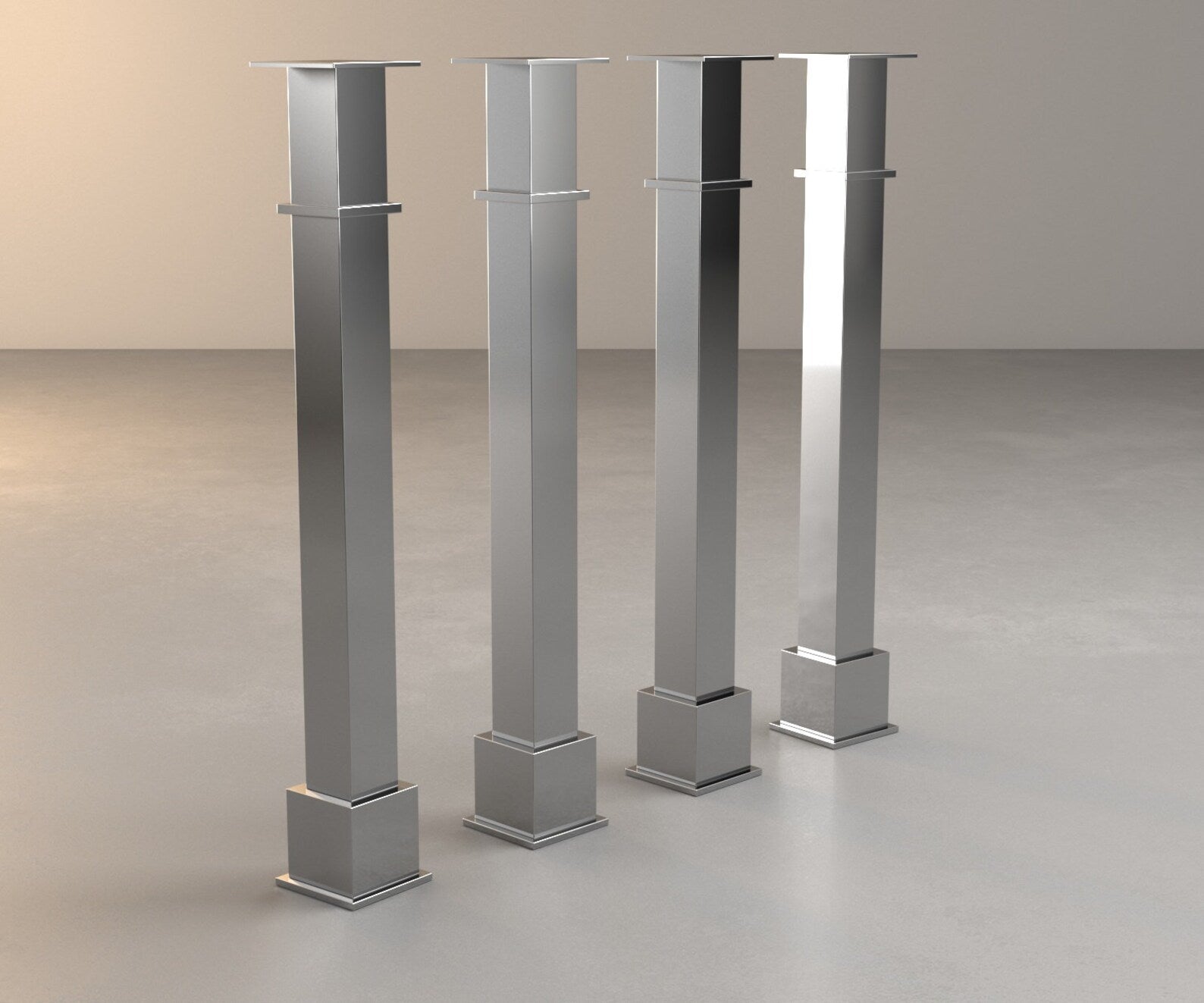An Overview to Picking the Perfect Legs For Kitchen Island for Your Home
Choosing the excellent legs for your cooking area island is a nuanced decision that influences both the functionality and aesthetic allure of this main room. Factors such as height, materials, and design play a critical role in balancing your island with the total cooking area layout. Additionally, understanding the significance of stability and maintenance can substantially affect your selection. As you take into consideration these elements, it becomes evident that the best legs can transform not only the look of your kitchen but additionally its use for several years to come. What specific attributes should you focus on in this option procedure?

Comprehending Kitchen Area Island Legs
When picking legs for a kitchen area island, it's essential to recognize their functional and aesthetic functions in the total design. The legs work as a critical assistance system, guaranteeing security and sturdiness for the island, which usually functions as an office, eating area, or gathering area. The choice of material and building method need to be durable adequate to withstand daily use and potential wear.
Along with their structural obligations, legs contribute substantially to the island's aesthetic charm. They can boost the cooking area's design, whether via typical, modern, or diverse layouts. The height and percentage of the legs are likewise important factors to consider; they have to integrate with the island's kitchen counter elevation while making sure comfortable seating for those making use of the room.
Moreover, the leg layout can affect the overall circulation of the cooking area. Open, ventilated leg styles can produce a sense of agility, while solid, substantial legs may share an extra based and steady aesthetic - Legs For Kitchen Island. Understanding these functional and visual aspects will certainly lead house owners in making notified choices that enhance their cooking area's style and improve its functionality
Popular Styles and Materials
The selection of legs for a cooking area island includes a variety of preferred styles and materials, each offering one-of-a-kind attributes that can improve both functionality and visual appeals. Amongst one of the most popular designs are contemporary, rustic, and traditional. Contemporary legs usually include sleek, minimal designs that stress simplicity and tidy lines, making them suitable for modern cooking areas. Rustic styles, on the various other hand, embrace natural environments and usually display reclaimed wood or troubled surfaces, adding warmth and appeal to the area. Standard legs typically show ornate details and workmanship, improving classic kitchen designs.

Elevation and Security Factors To Consider

Security is one more vital factor to consider. The legs of the kitchen area island should provide ample support, ensuring that the framework can endure daily usage without wobbling or changing. Material option plays a considerable duty in security; steel legs, for circumstances, tend to provide better stamina contrasted to wood. In addition, making sure that the island is securely anchored to the floor or wall surface can enhance stability, especially for larger islands that might birth considerable weight.
Matching Your Cooking Area Visual
Choosing the ideal legs for your cooking area island goes past capability; it additionally plays a substantial duty in the total aesthetic of the area (Legs For Kitchen Island). When selecting legs, take into consideration the layout style of your cooking area.
Legs that enhance or comparison with your island's surface and surrounding kitchen cabinetry can produce visual consistency or striking focal points. Additionally, take into consideration the surface of the legs; matte, glossy, or distinctive surfaces can significantly influence the general feel of the cooking area.
Installation and Upkeep Tips
Installing kitchen area island legs calls for cautious focus to information to guarantee both security and aesthetic charm. Make use of a stud finder to locate wall studs if you you can look here are affixing the legs to a wall surface or using braces for included assistance.
When securing the legs, utilize high-quality screws and, Discover More if needed, timber adhesive for additional stamina. For steel legs, make certain that you are using ideal anchors and tools to avoid damages to your floor covering. It is recommended to inspect for levelness after installment, making changes as needed to avoid wobbling.
Tidy the legs with an ideal cleaner, preventing rough materials that may scratch the surface area. By adhering to these setup and maintenance suggestions, you can ensure that your kitchen island legs continue to be both visually enticing and practical.
Final Thought
In verdict, choosing the ideal legs for a kitchen area island demands cautious factor to consider of height, security, and aesthetic compatibility. Eventually, thoughtful leg selection plays a vital role in raising both the practicality and style of the cooking area space.
When choosing legs for a kitchen island, it's vital to recognize their practical and aesthetic functions in the total design. Open, ventilated leg designs can create a sense of agility, while strong, substantial legs may share a more grounded and steady visual. The legs of the cooking area island ought to supply ample support, making sure that the framework can withstand daily use without changing or wobbling.Installing try this site kitchen area island legs needs cautious focus to information to ensure both stability and aesthetic charm.In final thought, choosing the ideal legs for a kitchen island requires mindful factor to consider of elevation, security, and visual compatibility.